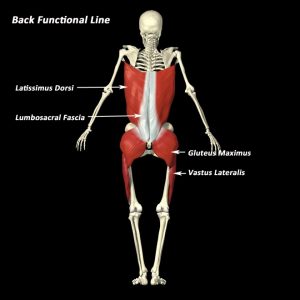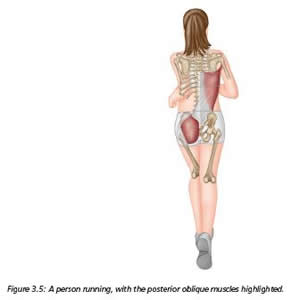Glute Training to Look & Perform Your Best
2018-12-10

When you ask people to think differently it can be one of the toughest things you can ask of someone. You can throw out the roughest exercise or workout program and that would be still easier than getting people to take a different perspective, especially on a popular topic like glute training.
I’ve written A LOT about how people often get exercises for glute training like the hip bridge wrong. Slowly people have been coming around to why and how we maximize glute training on the ground, but we are still bit slow to totally make the connections about glute training that I hope people can understand.

Part of it is that people still have a hard time accepting the fact that heavier weights don’t always lead to better results or how isolating a muscle doesn’t become the better way to train it for looks and performance. We have a long way to go when it comes to glute training and functional training overall.
What is it that I REALLY want people to understand about glute training? Here are three ideas that if you can master you will get glutes that look as great as they work!
Glute Training Lesson 1: Stop Isolating
Many people say they believe in functional based training. Then I hear them talk about muscles and even joints in isolated terms. If there is NOTHING else I can teach, it is that NOTHING in your body works in isolation. The most simple tasks have actually quite complex integrated movements to them. That means if we want to build muscle and function the way we were designed to move we have to understand how it is we move!
An easy example is looking at how the biggest muscles in your body, the glutes, lats, and obliques, are muscles that aren’t designed to run up and down. That means these are muscles that perform several jobs at once, most specifically to produce and resist force at the same time.

This bit of information tells us two things. For one, when we truly step back and look at the anatomy with the right glasses we see how closely interrelated the lats, obliques, and glutes are in their design. We also see this “white stuff” called fascia which helps connect these big muscles all together to help us be strong and stable. So, why not use them in our glute training and do the same in the gym?!
Second, it tells us that purely moving up and down is NOT the ideal way to train these muscles. That is why in DVRT we progress so many of our movements from stable to unstable environments. Not because it is purely harder to balance, but we want to challenge these connections to work at their highest levels to both produce and resist force at the same time!

Most people don’t think about how our body is designed to perform the most important everyday activities like walking.
Glute Training Lesson 2: Everything Comes From The Ground Up
I know it may be heart breaking to hear, but we were not designed to lay on the ground and perform exercises. As one of the father’s of functional training, physical therapist Gary Gray, points out, one of the most important aspects of real world fitness is navigating gravity. It is probably a safe bet that you never heard anyone get pumped to go to the gym to get their resistance of gravity on.
Learning how to navigate gravity though is how our body uses our muscles in synergistic ways to make complex actions seem relatively simple and smooth. Simply put, we were designed to move! Walking, running, locomotive actions that are highly complex, but we perform without thinking about it. Looking back, seeing how we balance as we do such fast, dynamic, and unpredictable motions without falling over all the time is quite astounding and is a testament to not only why proper glute training is important, but how we can understand their true roles in life and sport.
With that said, the way EVERYTHING begins is from the ground up! When our foot strikes the ground there is a chain reaction (sorry Gary Gray, I didn’t mean to steal your term, but it’s the perfect description) that goes up the body. Which means that our glute training shouldn’t focus on cues like squeezing the glutes, but how to use the feet and how we create tension into the ground to truly optimize our lower body training.

You can see in all these diagrams that the blue starts at the feet and goes up the body.
Glute Training Principle: We Use All Planes of Motion
Many coaches can tell you the planes of motion, but far fewer can tell you how it relates to creating exercises. Something I emphasize a lot in our DVRT programs is how the different planes of motion give us another variable to make an exercise more challenging or easier. The same can be said for your glute training.
Understanding that when we go to more single leg stance type of exercises we get that combination of production and resistance of force is huge in really getting why heavy loads can be misleading in glute training. It is why in THIS study researchers found bodyweight lunges to be superior to loaded squats for glute training.
When you see DVRT drills like what Sean Lettero and Paige Fleischmann demonstrate it COULD look like the easiest way to blow out your low back, but if we look deeper we can see the most advanced ways of building glute training!
https://www.instagram.com/p/BqSp5P9FFjG/?utm_source=ig_web_copy_link
Creating stability in the pelvis while we use some slight thoracic rotation is how your body is constructed. In performing movements like this we are tapping into the most fundamental aspects of how your glutes and core work together to produce complex movements that most other animals can’t do!
What we find is glute training exercises like this put together the concepts of good glute workouts. In understanding how the glutes actually work we can construct movements that really target those ideas, rather than trying to justify the ones we are already doing. Remember, functional training is all about understanding how our body functions and developing exercises, progressions, and programs that reflect such understanding.
Follow these tips so you can maximize these great DVRT exercises:
-Focus on pushing through the feet to start using the glutes instead of “squeezing” the glutes.
-Tie in the lats with creating tension against the Ultimate Sandbag by trying to pull apart the handles and/or break the Ultimate Sandbag with the forearms.
-Start introducing anti-rotational exercises like DVRT Master, Greg Perlaki, shows with a march and lateral band resistance.
-Work towards rotational exercises that really tap into the full potential of the glutes!
The holidays are almost here! Don’t miss the chance to save 30% ALL throughout our DVRT site with coupon code “holiday” HERE
© 2025 Ultimate Sandbag Training. Site by Jennifer Web Design.






